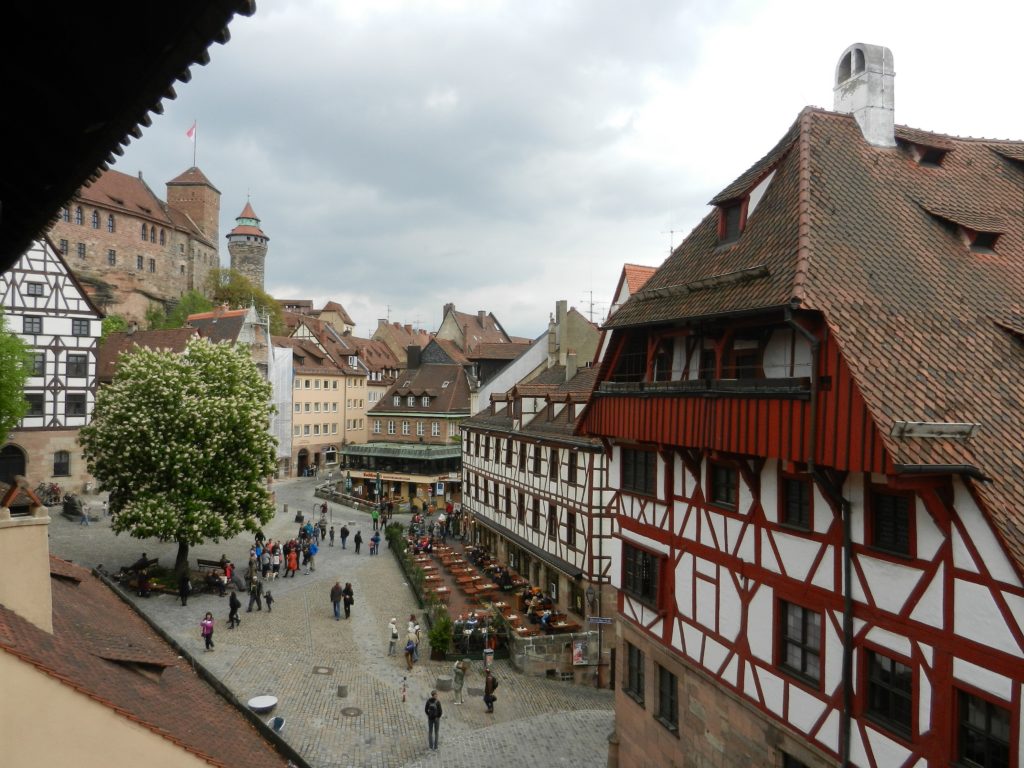
Nuremberg is a beautiful German city with a checkered past. The second-largest city in Bavaria, Nuremberg’s exquisite, timber-frame buildings and dark beer bring tourists thronging all year-round. The old town in particular is well-preserved and beautifully captures the image of traditional Bavaria. That’s not even mentioning that Nuremberg has been a thriving hub culturally, artistically, and economically for centuries. It was the centre of the German Renaissance and birthplace of the great artist Albrecht Dürer and composer Johann Pachelbel (Pachelbel’s Canon, anyone?). Yet what made Nuremberg such a successful urban entity is also what attracted the interest of the Nazi party.
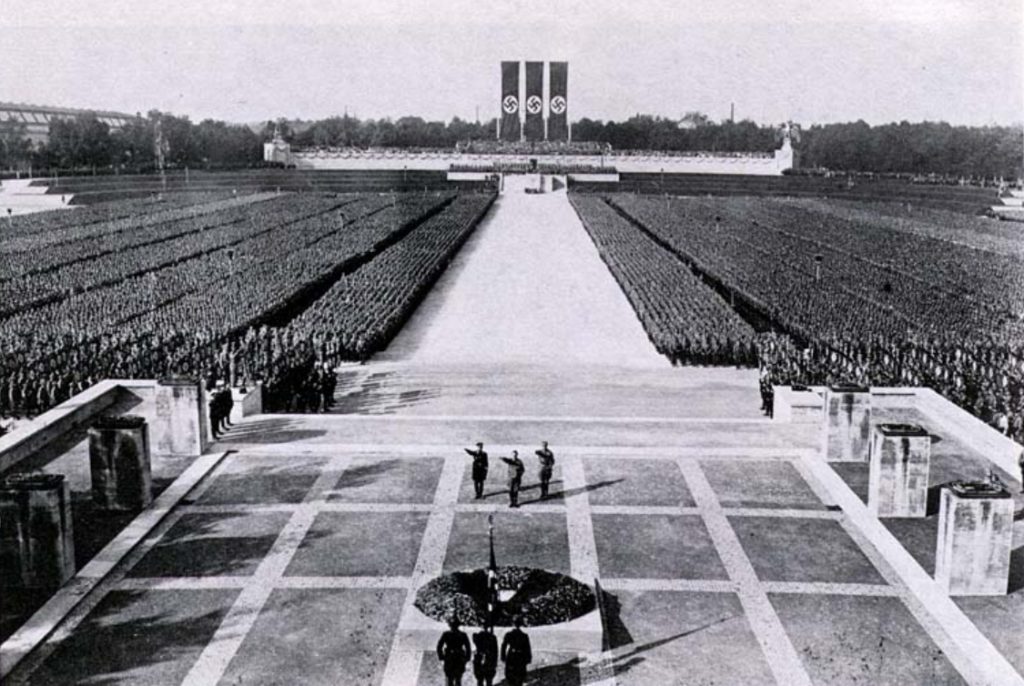
Reich Party Rallies were held in Luitpold Grove in 1927 and 1929, with Nuremberg being officially appointed as “City of the Nazi Party Rallies” in 1933 by the National Socialists. Week-long rallies drawing in as many as a million people from all over Germany were held every September up until 1938. It was during the 1935 rally when the Nazis presented the “Nuremberg Laws“, antisemitic rulings that were the beginning of what would lead to the Holocaust. It’s fitting then that after the Allied victory of World War II Nuremberg was chosen to host the military tribunals. These tribunals, known as the Nuremberg trials, would prosecute some of the prominent members of Nazi Germany who participated in planning, executing, and otherwise contributing to the Holocaust and other war crimes. These tribunals were governed by the Nuremberg, or London, Charter, a set of procedures and laws laid out by the Allied powers. The Subsequent Nuremberg Trials, held in Nuremberg’s Palace of Justice, were a series of 12 U.S. military tribunals also conducted to bring lesser war criminals to justice, the last of which concluded on April 13, 1949.
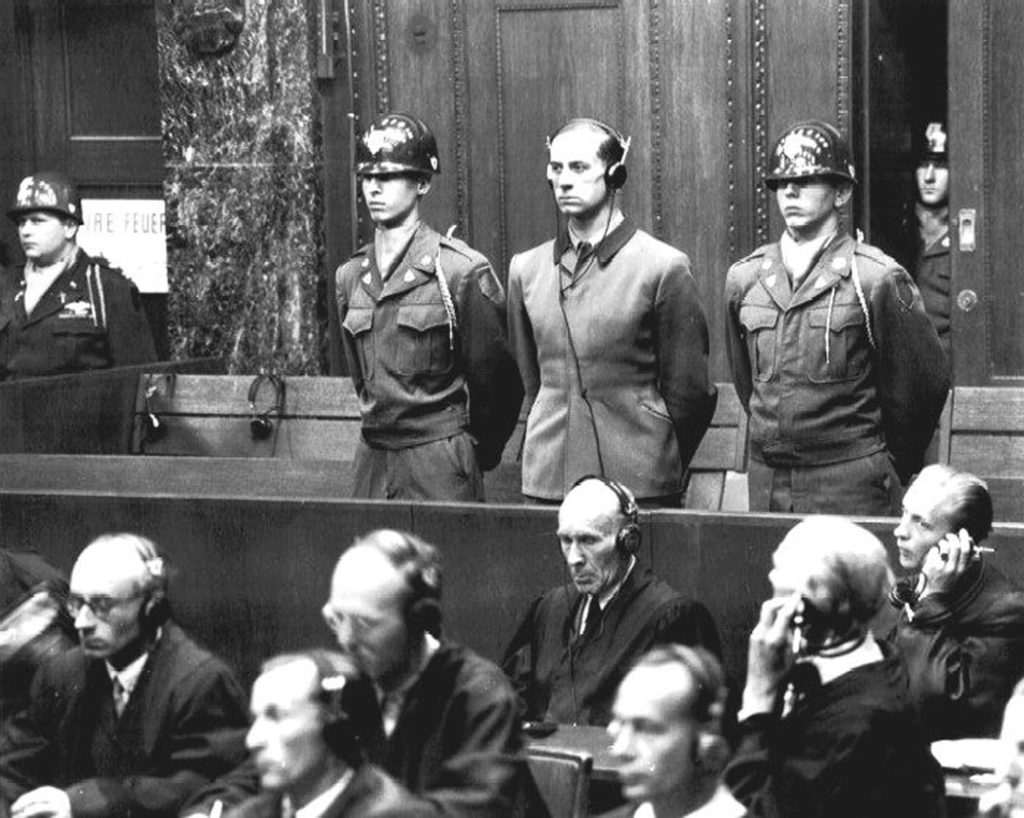
Today, Nuremberg doesn’t shy at talking about the darker points in its history, but it’s more eager to share its treasures. Braeden, Nathanael and I spent a couple of days in an Airbnb apartment, sightseeing and visiting the nearby cities of Bamberg and Rothenburg ob der Tauber, followed by a couple of days with a couchsurfing host, Uli.
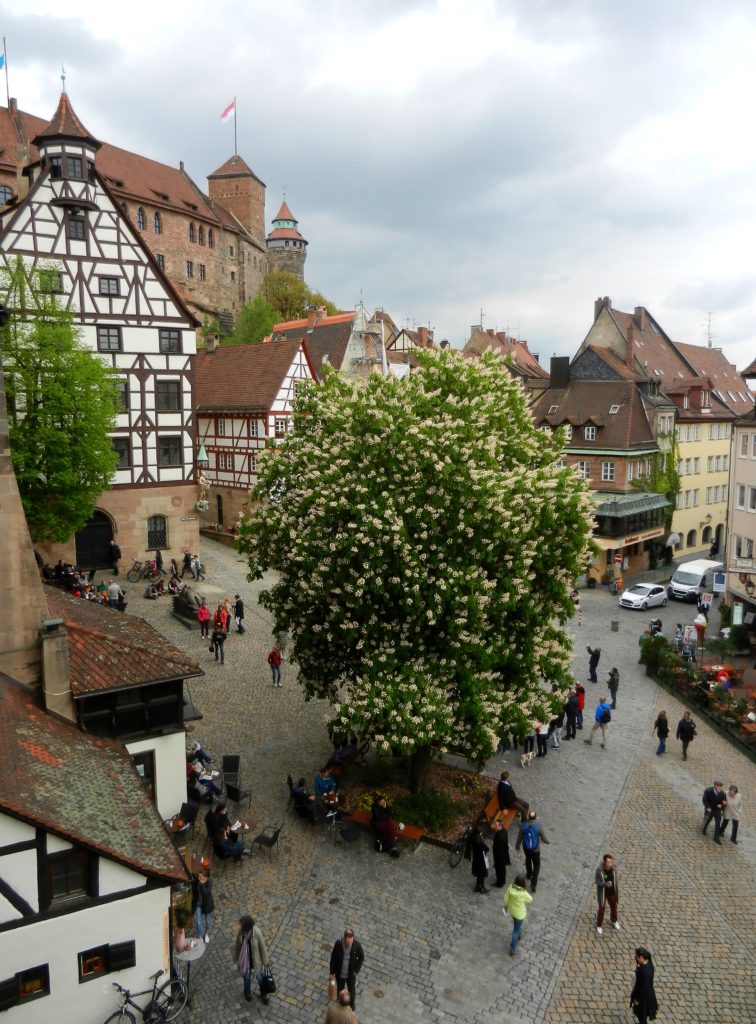
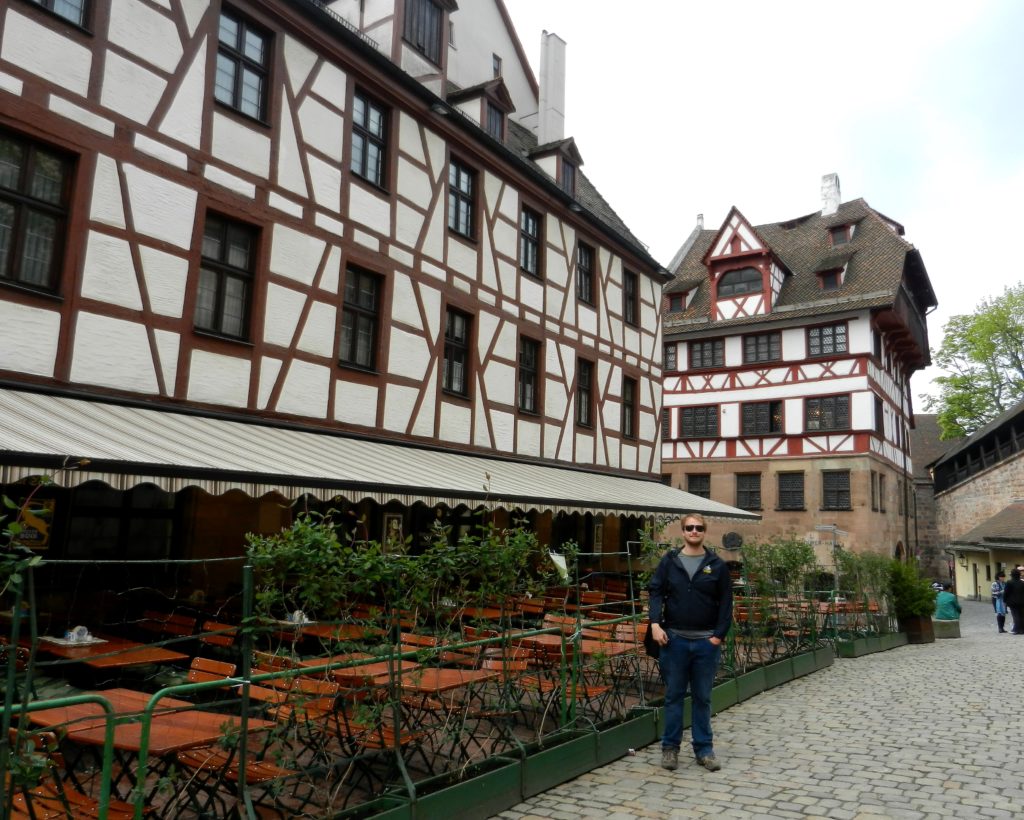
Our first stop in Nuremberg was Kaiserburg, gazing benevolently over the Altstadt. Kaiserburg housed the crown jewels of the Holy Roman Empire and features the Knights’ and Imperial Hall, a Romanesque chapel, and the Kaiserburg Museum. We were feeling a bit museum-exhausted at this point, so we opted instead to explore the grounds and the lovely gardens tucked behind. From the gardens you have a great view down the length of the city walls and if you’re feeling energetic a walking/biking path has been made along the green space along the castle moat. You can find the Mayor’s Garden as well, another beautiful green space.
Further afield, there are plenty of neat, little gems to keep you busy. Kettensteg is a tucked away chained suspension bridge that will offer great photo ops over Pegnitz river, as well as of the fortified bridge right behind it. Nuremberg is famous for its epic, month-long Christmas Market, but unfortunately Christmas was a long way away when we visited in May. That being said, Nuremberg is still alive with fresh produce markets, street vendors, and plenty of shops to keep you busy. A little further east you can cross henkersteg, the “Hangman’s Bridge” built in 1457, to find yourself in Trödelmarkt, originally a pig market and now lined with beautifully restored homes. This market features an elegant and eclectric mix of shops and cafes that are a lot of fun to browse through. Continuing east along the river, you’ll discover the Heilig-Geist-Spital, the Hospital of the Holy Ghost. Established in the early 14th century to care for the elderly and the needy, sections straddle the Pegnitz river and today house shops, an apothecary, and a restaurant where you can enjoy some local delights with a riverside view.
Our couchsurfing host Uli was awesome, he toured us around when he had the time, took us to beer gardens (biergartens, the essential summertime, German experience), and gave us a glimpse of how Germans actually live (it’s fantastic, by the way). One especially memorable evening he introduced us to Schweinshaxe with kartoffelknödel (Pork knuckle with potato dumplings) and our lives (and waistlines) were never be the same again.
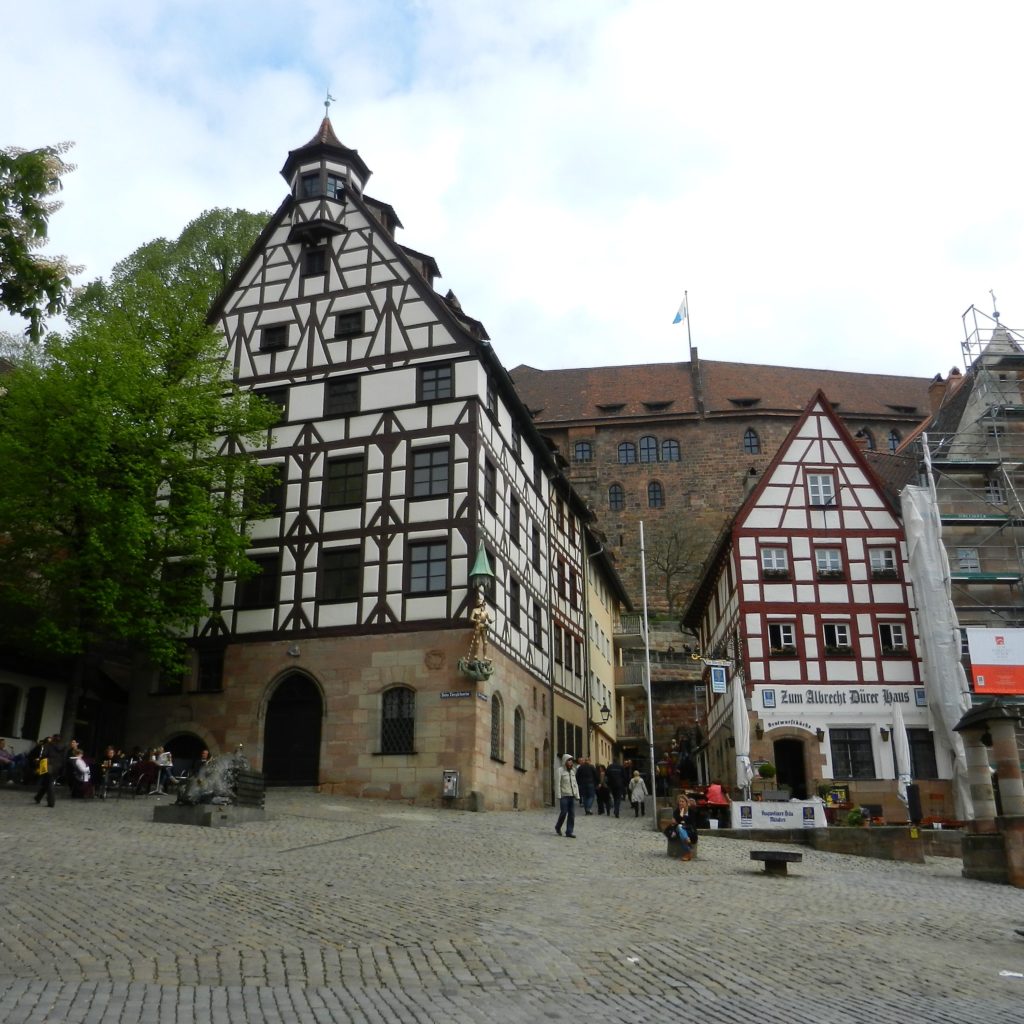 For our last evening in Nuremberg Uli had planned a special surprise for us. We were going to learn how to make German spätzle (check out Uli’s recipe here!). For all our fellow Canadians out there (and those who have visited!), I would say it’s an equivalent to our poutine; a deliciously heavy, comfort food best enjoyed hot with a beer. With an assembly line of Uli and I on dough making, Nathanael and Braeden on noodle cooking/cheese sauce, before we knew it we were sitting down to a mouthwatering, cheesy mess. A perfect last night with a great host, thanks again, Uli! After a lot of laughter and cleanup, with full bellies and a little too much beer, we all eventually turned in for the evening. Guten tag Nuremberg, you’ve been a great host!
For our last evening in Nuremberg Uli had planned a special surprise for us. We were going to learn how to make German spätzle (check out Uli’s recipe here!). For all our fellow Canadians out there (and those who have visited!), I would say it’s an equivalent to our poutine; a deliciously heavy, comfort food best enjoyed hot with a beer. With an assembly line of Uli and I on dough making, Nathanael and Braeden on noodle cooking/cheese sauce, before we knew it we were sitting down to a mouthwatering, cheesy mess. A perfect last night with a great host, thanks again, Uli! After a lot of laughter and cleanup, with full bellies and a little too much beer, we all eventually turned in for the evening. Guten tag Nuremberg, you’ve been a great host!













